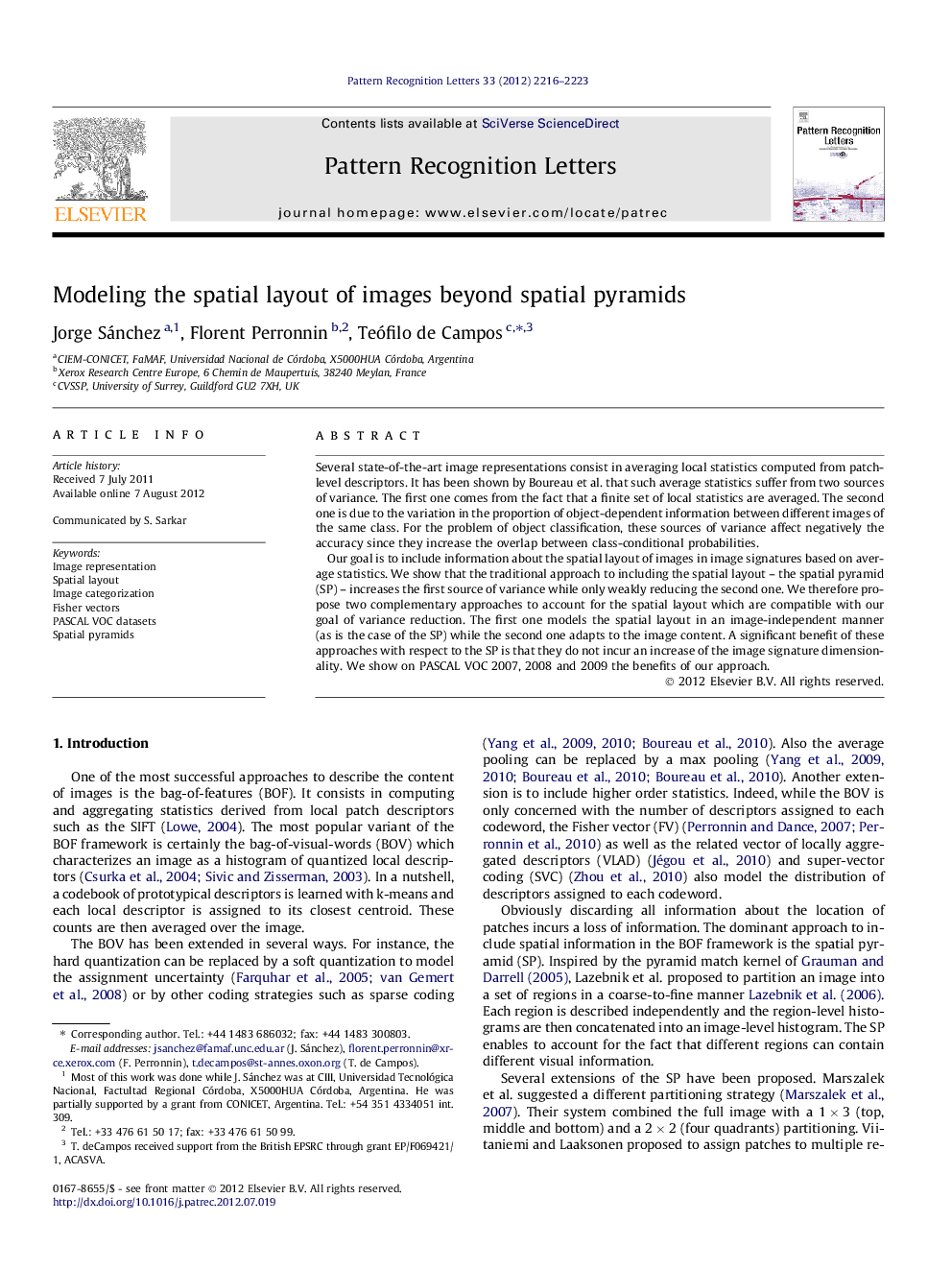| Article ID | Journal | Published Year | Pages | File Type |
|---|---|---|---|---|
| 534094 | Pattern Recognition Letters | 2012 | 8 Pages |
Several state-of-the-art image representations consist in averaging local statistics computed from patch-level descriptors. It has been shown by Boureau et al. that such average statistics suffer from two sources of variance. The first one comes from the fact that a finite set of local statistics are averaged. The second one is due to the variation in the proportion of object-dependent information between different images of the same class. For the problem of object classification, these sources of variance affect negatively the accuracy since they increase the overlap between class-conditional probabilities.Our goal is to include information about the spatial layout of images in image signatures based on average statistics. We show that the traditional approach to including the spatial layout – the spatial pyramid (SP) – increases the first source of variance while only weakly reducing the second one. We therefore propose two complementary approaches to account for the spatial layout which are compatible with our goal of variance reduction. The first one models the spatial layout in an image-independent manner (as is the case of the SP) while the second one adapts to the image content. A significant benefit of these approaches with respect to the SP is that they do not incur an increase of the image signature dimensionality. We show on PASCAL VOC 2007, 2008 and 2009 the benefits of our approach.
► State-of-the-art image representations consist in averaging local statistics. ► Our goal is to include information about spatial layout in image signatures. ► We propose and evaluate two complementary approaches. ► The first is image-independent and the second adapts to the image content. ► These methods present a significant benefit over spatial pyramid-based methods.
